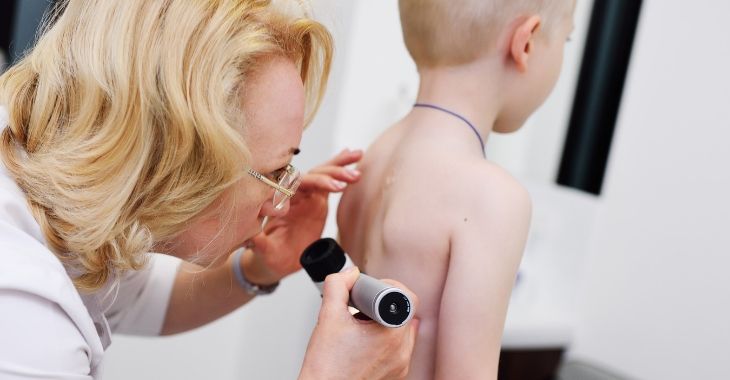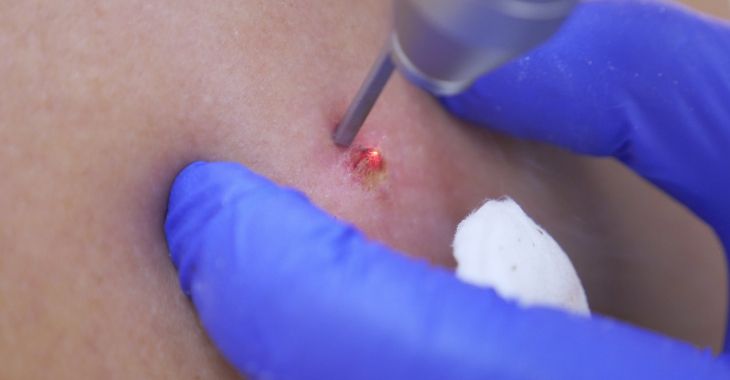Common Types of Vascular Birthmarks

Many children are born with birthmarks or may have birthmarks that appear within a few weeks after birth. Most of these growths are vascular birthmarks and are rarely dangerous. However, whether or not they will require treatment depends on their type and location. Here are some of the most common types of vascular birthmarks and treatment recommendations.
Macular Stains
The most common types of vascular birthmarks are macular stains or salmon patches. These are reddish discolorations on the skin, usually on the head or neck. Those located on the head are referred to as Angel Kisses, usually small marks on the eyelids, upper lips or forehead. Stork Bites are another macular stain, identified by red marks on the neck. Both of these common birthmarks usually fade with age and generally do not require treatment.
Strawberry Patch Hemangiomas
Red birthmarks that appear in the weeks after birth and grow larger for several months are called strawberry parch hemangiomas. These also will begin to fade and shrink after they reach full size around nine months. In most cases, no treatment is needed. Laser treatment can be used to fade the color quicker.
Port-Wine Stain
The port-wine stain or nevus flammeus is a vascular birthmark that does not go away on its own. These birthmarks appear at birth and grow as the child gets older. They can be pink, red or purple and located on the face, arms, legs or other body parts. If they are on the face, they may interfere with vision if too close to the eye. These may also be disfiguring if on the face – facial port-wine stains are often removed.
Most vascular birthmarks fade away over time, but all birthmarks should be examined by a birthmark specialist to determine whether treatment is needed.
Posted on behalf of:
The Vascular Birthmark Center Los Angeles
435 N. Bedford Drive, Suite 203
Beverly Hills, CA 90210
(610)301-4522
The information provided on this website, including text, graphics, images, and other materials, is intended solely for informational purposes and should not be used as a substitute for professional medical advice, diagnosis, or treatment.


)